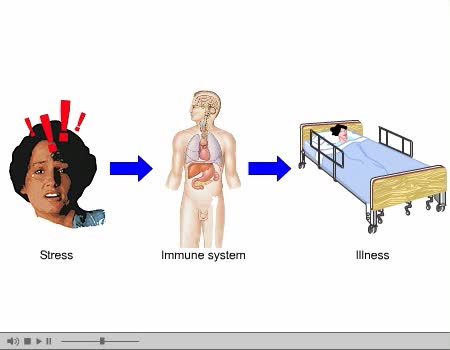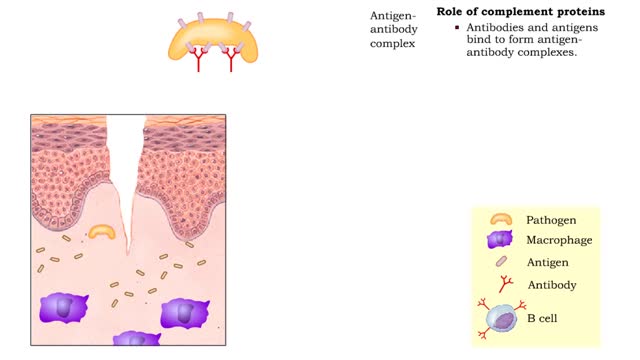Immune responses Animation
By: HWC
Date Uploaded: 01/03/2022
Tags: Overview of interactions in antibody-mediated and cell-mediated immunity Animation antibody mediated immune response naive B cell pathogen bacterium naive helper T cell activated helper T cell interleukins immune response macrophage naive cytotoxic T cells
Overview of interactions in antibody-mediated and cell-mediated immunity Animation The antibody mediated immune response begins when a naive B cell encounters antigens from a pathogen, such as a bacterium. The B cell binds, processes, and displays this antigen. It is now an antigen-presenting B cell. A naive helper T cell binds to the antigen-presenting B cell. This activates the helper T cell. The activated helper T cell secretes chemical signals called interleukins. The interleukins stimulate the B cell to divide and form memory B cells and effector B cells. The effector B cells produce antibodies against the antigen that began the immune response. The memory B cells remain to protect against later infections by the same pathogen. The cell-mediated immune response begins with an antigen-presenting cell, such as a macrophage that has engulfed or been infected with a virus. Naive helper T cells and naive cytotoxic T cells interact with the antigen-presenting cell. The helper T cell is activated and secretes the chemical signals called interleukins. The interleukins stimulate the cytotoxic T cells to divide and differentiate to form effector cytotoxic T cells and memory T cells. The effector cytotoxic T cells touch-kill cells infected by the same pathogen that triggered the initial response. The memory T cells are set aside to protect against later infections.
Add To
You must login to add videos to your playlists.
Advertisement












Comments
0 Comments total
Sign In to post comments.
No comments have been posted for this video yet.